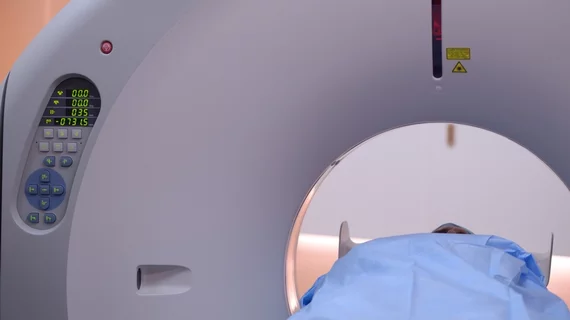Assessment of abdominal aortic calcification using computed tomography (CT) is a highly effective predictor of future heart attack and CVD risk, according to research published in Radiology Oct. 2—more effective even than the Framingham risk score, which has been relied upon for more than two decades.
Stacy D. O’Connor, MD, MPH, an assistant professor of radiology at the Medical College of Wisconsin in Milwaukee, led the project, which assessed the relationship between cardiovascular events and abdominal aortic calcification in 829 asymptomatic patients in their 50s. O’Connor said her team attempted the CT approach because, as well-known and widely used as the Framingham risk score is, many patients who use it fall into the “indeterminate risk” category, meaning they might benefit from additional noninvasive risk assessment.
That’s where CT comes in, she said. It can be used to measure calcium buildup in the abdominal aorta and can illuminate other measures of atherosclerosis. CT colonography, or virtual colonoscopy, is also a routine part of clinical workflow.
“There are thousands of CT scans performed every day across the United States, so this gives us an opportunity to reach a lot of people,” O’Connor said in a release from the Radiological Society of North America. “For instance, if someone is getting a scan for cholecystitis and we see abdominal aortic calcification on the CT, we can address things like blood pressure and cholesterol with the patient.”
O’Connor and her team followed up with their patient pool for an average of 11 years, checking periodically for CVD events like MI, stroke, death or congestive heart failure in the population. After more than a decade, 18.8 percent of patients had experienced a major cardiovascular event, including 39 heart attacks and 79 deaths.
The authors compared those outcomes to participants’ CT-based abdominal aortic calcification scores, which they calculated from patient records of nonenhanced screening CT colonographies that took place between April 2004 and March 2005. Calcification was a strong predictor of future CVD events, beating the Framingham risk score in its accuracy.
“We found a strong association between abdominal aortic calcification and future cardiovascular events,” O’Connor said. “With heart disease being a leading cause of death, anything we can do to make our patients more aware of their risk is going to help.”
She said abdominal aortic calcification assessment shows promise as a screening tool—especially something that can be implemented without much additional effort—and said her team is pushing forward with larger clinical trials.
“It’s our hope that these opportunistic measures can be added to reports for patients undergoing routine abdominal CT, regardless of the imaging indication,” she said.

